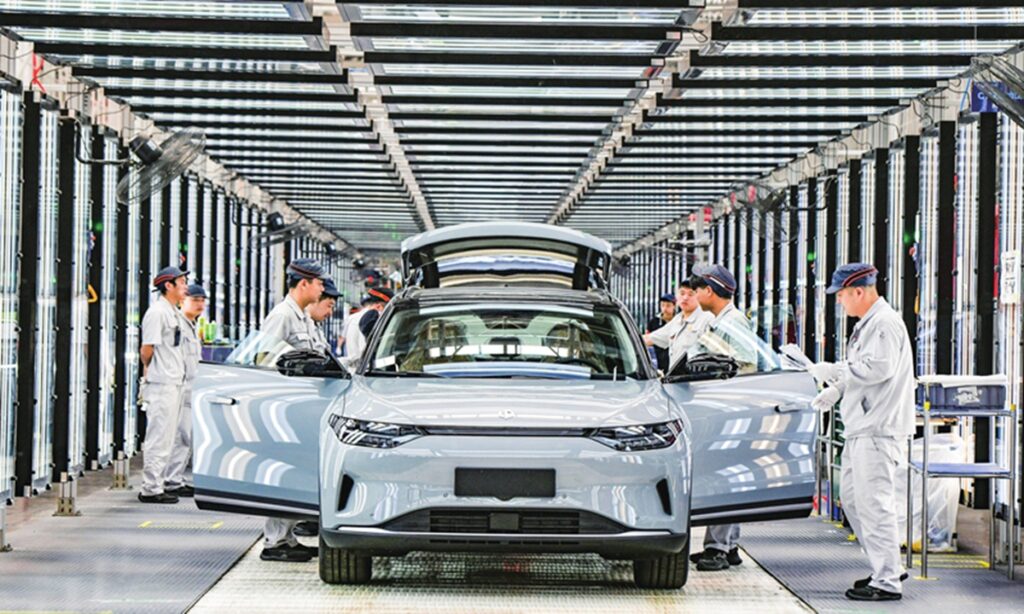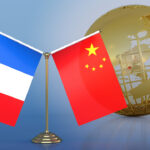On May 3, the US Treasury announced relaxed conditions for tax incentives when consumers purchase electric vehicles (EVs). Previously, EVs using Chinese-produced minerals were set to lose tax incentives starting in 2025. The new adjustment extends this deadline to 2027 for certain minerals like graphite.
According to an analysis by Nikkei News, the US government’s decision to relax these conditions stems from the difficulty of producing EV batteries without using Chinese-produced graphite. Graphite is a core material in lithium battery anodes, and currently China accounts for 70 percent of its supply worldwide, with a high dependency on Chinese processing and refining capabilities.
As the US grapples with the complexities of its containment and decoupling from Chinese manufacturing, it’s increasingly feeling the “pain.” Over the past three years, the US government has implemented strict export controls to weaken China’s high-tech capability. However, this approach has started negatively impacting the US itself, creating a complex double-edged effect.
A report released last month by the New York Federal Reserve Bank (Geopolitical Risk and Decoupling: Evidence from US Export Controls) analyzed this issue. According to the research by Matteo Crosignani and others, US export controls led to widespread decoupling between American suppliers and Chinese companies. Affected American suppliers are more likely to terminate existing relationships with Chinese clients and less likely to form new ones.
With the decoupling, numerous American suppliers impacted are unable to form new supply chain connections with clients in the US or allied nations within three years of the export controls being enforced. The imposition of export controls has resulted in substantial losses for affected American suppliers, leading to heightened negative loan default risks, with an average market value decline of $857 million per impacted supplier, summing up to $130 billion collectively across all suppliers. These suppliers are also encountering reductions in revenue, profitability and workforce. Bank loans to these suppliers have notably dwindled, signaling wider financial limitations.
From the perspective of Chinese companies, the report reveals their resilience. Targeted Chinese enterprises have increased their reliance on domestic and non-US suppliers to cope with US export controls. They have established new relationships with alternative suppliers within China and strengthened cooperation with existing non-US suppliers to mitigate the impact of the controls. Moreover, US export controls may unintentionally promote domestic innovation in China as businesses are forced to reduce their dependence on American technology.
Washington has implemented decoupling strategies with China, not without anticipating losses on the American side. The approach involves sacrificing short-term economic interests to prompt supply chain shifts and hinder China’s rapid advancement in vital high-tech areas, thereby maintaining America’s continuous advantage in global technology competition. However, the trouble now is that decoupling not only causes more losses for the US but also rebuilding supply chains is not an easy task, and some may be impossible.
This is because Chinese manufacturing has achieved large-scale, diversified and multi-tiered system development, with many sectors being irreplaceable, and the aggressive expansion of Chinese manufacturing in the global market is unstoppable, especially in sectors like EVs, renewable energy, shipbuilding, high-speed rail and steel, where it already has the upper hand.
As Chinese enterprises gradually reduce their dependence on American technology and enhance their own innovation capabilities, the influence of US enterprises in the global market may further weaken. The position of Chinese manufacturing in the global supply chain is becoming more solid. Extensive decoupling of US businesses from China could potentially cause irreversible damage to the global industry and supply chains, as well as their own. Washington has already had to start assessing the consequences brought about by this.
Chinese enterprises are also seeking breakthroughs by establishing new supply chains and innovation paths. The friction and conflict between US and Chinese manufacturing will unfold on a broader scale.
The US will not change its policy of containing China in the short term. It will continue to expand the scope of its controls and sanctions, while coordinating with other third parties to curb Chinese enterprises’ access to international markets and find new ways of international cooperation.
This strategic game will have complex impacts on the economies of both sides, including adjustments to their own economic structures and profound effects on global political, economic and security fields. Change has already begun.
(Global Times)




